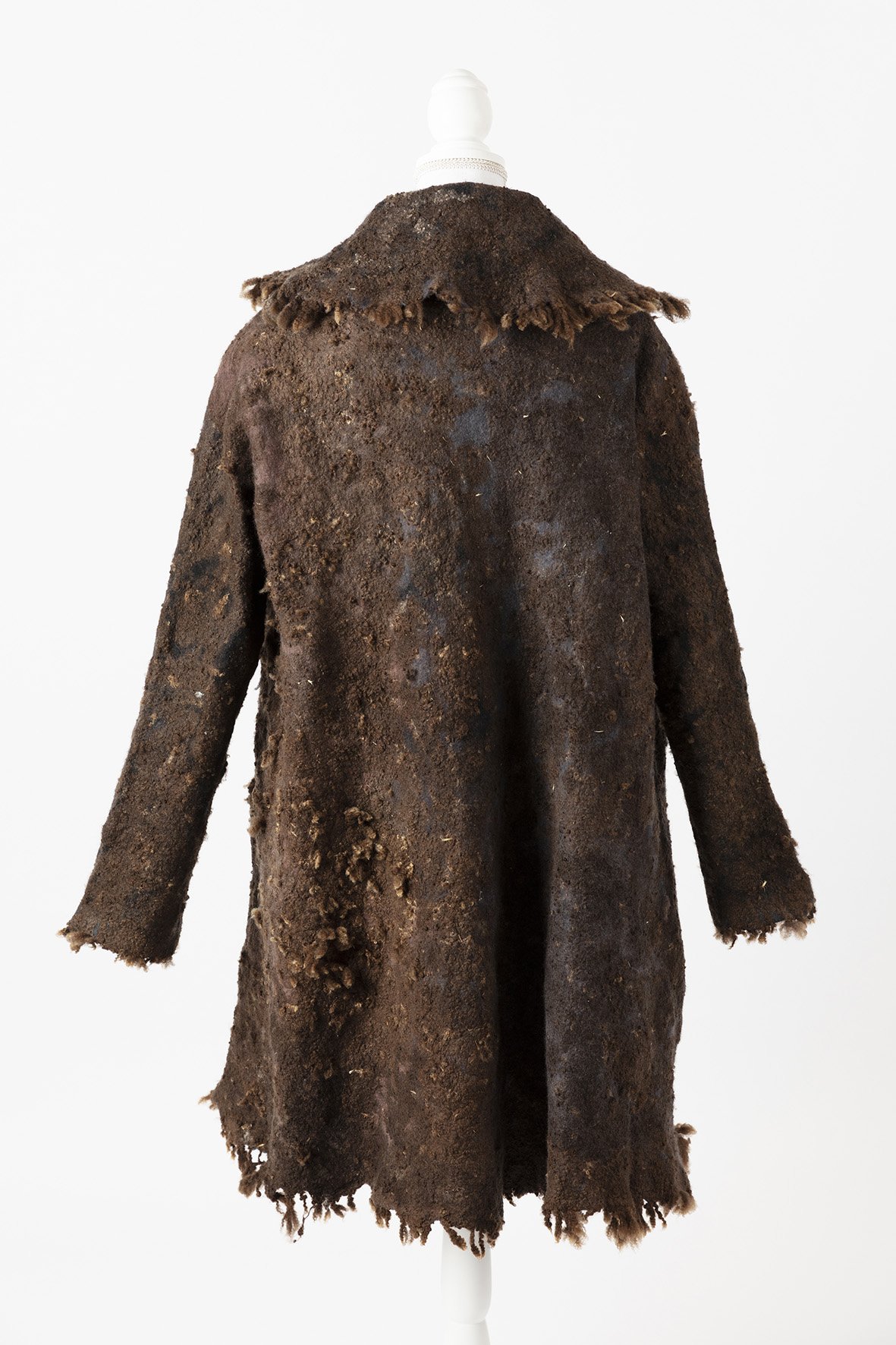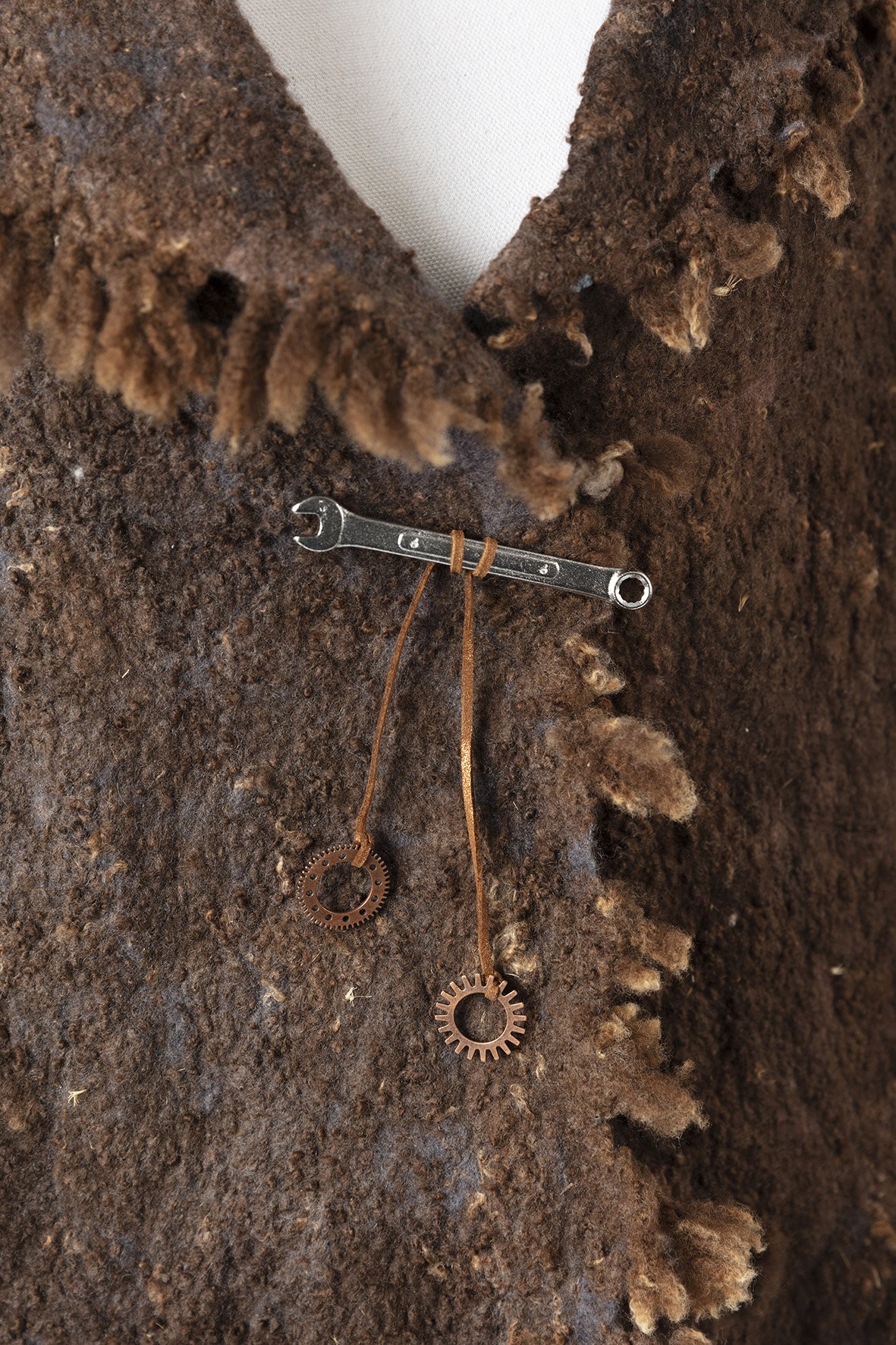
Self-sufficient
Role Model Mindset: I can make it myself
Muslin, merino tops, raw merino, tools
“Dad worked hard at two jobs. He was a timber worker. Mum was the one who loved the farm. While Dad was at work, we worked the little bit of land that we had with her.
You cleared the land over time and made pasture and fences. Then you got animals. We had an old cow that had rickets. We learned to milk it from when we were very young.
We were very poor and so we just had to learn to make do.”
Design
I already knew how to knit and crochet, but I had never felted, so the design was entirely lead by the talented Kay Louwen, who agreed to “show” me how to make a felt coat.
One of the aspects of the Self Sufficient story that stays with me is that she was never allowed to work alongside her father, even though she was unlucky enough to be assigned to help him. So she learned by watching him. It suggested to me that I too should learn in this way, to make a coat in a new way.



Fabric
It was an exhausting and frustrating process for me, because I was accustomed to cutting to get the shape I wanted, and adjusting seams to refine the shape. This was a slooooow process, and gave me a new appreciation for the skill and strength of women who specialize in felt. It is an organic, tactile and full-body production process.
The fabric for this coat is raw merino wool on a muslin base. Rolled thousands of time over three days, felted fabric starts twice the size of the final shape required. Each large piece must be laid out, covered with successive fine layers of wool and then wet, rolled, unrolled, turned, wet, rolled again. Once the final sizing is approached, seams are joined and the whole garment is gradually worked (shrunk) in one piece to the final size.



